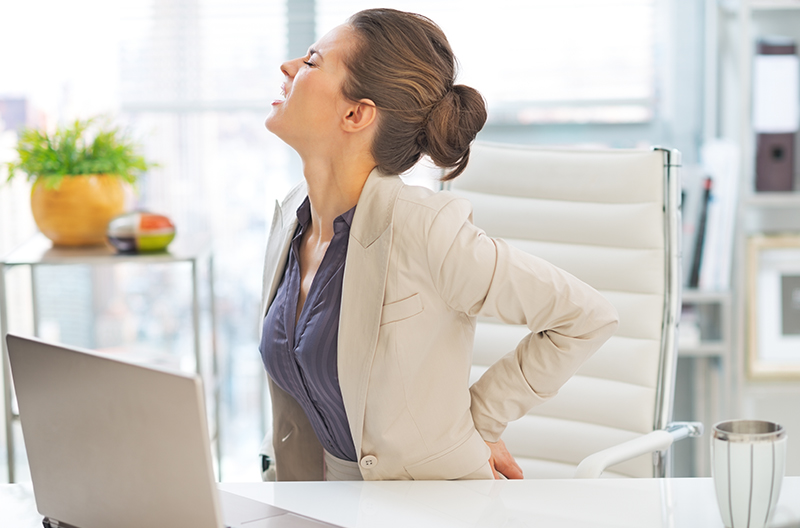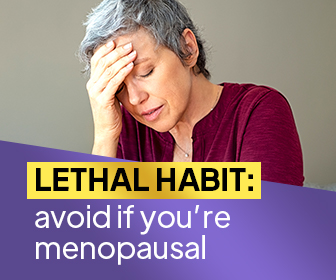Back pain is a serious health issue that you’re probably going to have to deal with at some point in your life. Studies suggest that approximately 80% of people will experience some form of it[1], specifically lower back pain. So what are some common back pain causes you should be aware of?
In this article, you will learn about 6 simple habits you can change to improve your quality of life and reduce the risk of long-term back pain.
Why Should I Care About Back Pain Causes Now?
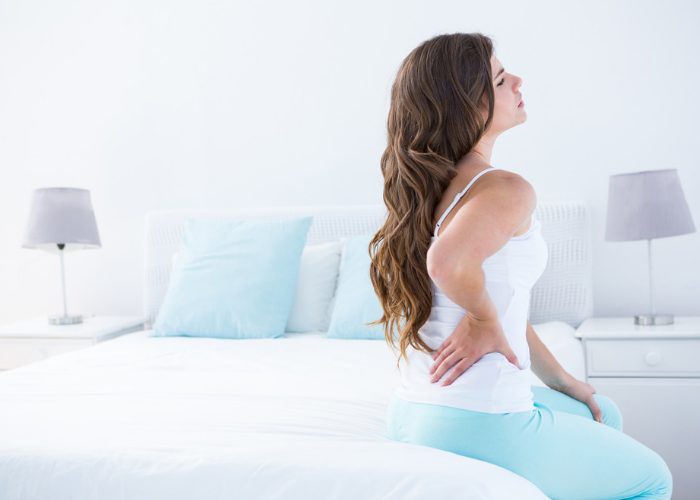
Back pain can be debilitating and is a major factor in the quality of life of the elderly. You may think that you’re fine to worry about it at the time, but your choices and behavior now will affect your future quality of life. Not taking care of your back now will impact the way your back ages, as well as your mobility and independence in later life.
The things you do in your day-to-day life have an impact on your chances of developing non-specific back pain just as some simple habits can markedly improve your back health and quality of life. Read on to discover common back pain causes you should be mindful of.
Cause #1: Sitting Too Much
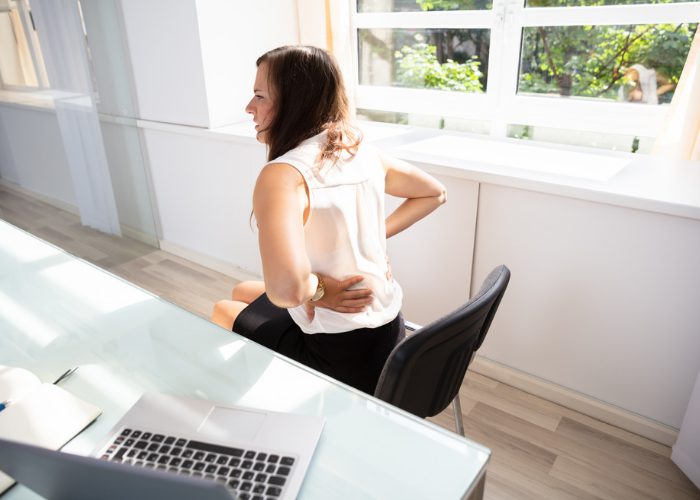
Sitting down for long periods of time is disastrous for health – not only does it reduce metabolic health, but it can compromise the posture of the hips and back, causing back pain[2]. If you work in an office, drive home, and spend your nights sat on the couch watching television, you’re increasing the odds of debilitating and uncomfortable lower back pain. As many as 84% of adults will experience some form of lower back pain, with 10-12% of the general population being disabled in some degree by it[3].
When you sit for long periods of time, especially slumped or slouched, pressure is spread through the hips and spine. These are the two main structures involved in lower back pain and sitting compromises them both – by sitting for a long time you compress the disks of the lower back and stress the connective tissues. When you’re spending time in the office or on the couch, take regular breaks to unload the hips, stretch the muscles, and stop the connective tissues from shortening or thickening. You can even try doing desk exercises to stretch out your muscles.
Driving is particularly bad for the posture of the hips and the back. Driving puts the body in a poor sitting position with a rounded back, inactive hips, and excessive rotation and pressure through one leg. This pressure through one leg is a huge demand on the hip: if you commute for 30 minutes a day, you’re likely to develop a serious hip obliquity over time.
Hip obliquities are what happens when you have more demands on one side of the hip than the other, which can twist the spine and strain the muscles of the lower back. Proper driving posture can help prevent this problem[4].
Cause #2: Sleeping

Sleeping is another time when poor posture can contribute to chronic lower back pain. If you spend your waking time sitting, consider that you spend as many as 8 hours a night sleeping. It’s no wonder that sleeping is a back pain cause for many of us.
Poor posture across a whole one-third of the day will have a huge impact on your long-term back health, especially since proper sleeping posture plays an important role in decompressing the spine. If you change from harmful sleeping posture to an effective, decompressing posture you can make a huge change to the long-term health and positioning of your spine.
Poor posture across a whole one-third of the day will have a huge impact on your long-term back health, especially since proper sleeping posture plays an important role in decompressing the spine. If you change from harmful sleeping posture to an effective, decompressing posture you can make a huge change to the long-term health and positioning of your spine.
When sleeping, the key is to maintain a neutral spine position and avoid excessive arching or rounding of the back. It is possible to achieve this healthy position whether you sleep on your front, side, or back – the key is to support the hips in a way that unloads them (reducing the stress or weight transferred through the hips)[5].
One big change that might help your long-term health is to replace your bed. If you’re sleeping in a bed that is either too hard or too soft, it can force your hips into a compromised position and stress the spine. Make sure that you can rest comfortably in your bed without aching – if you have to change position due to aches or discomfort in the spine, try adjusting your position with a towel or cushion, or simply change to a more suitable bed.
If you’re having trouble getting a restful night’s sleep, consider implementing some simple sleeping tips. Your mind – and your back – will thank you for it!
Cause #3: Running

Running is great for cardiovascular health, but it can be a real problem for the joints. Running with poor technique, or running without a reasonable strength base, can contribute to poor hip posture and back pain. The repeated impact of the foot against the floor and the “cyclical” stress and loading of the legs and hips during running is a contributor to the development of tightness and impact through the hips[6]. The hips are key to back pain: most back pain is the result of “pull” or torsion from the hips, rather than the back itself (with the exception of disc pain, for example).
Running on weak muscles is one of the most common ways of exaggerating this problem. Weakness or tightness around the hips and back is one of the most common ways that injury occurs. Weak muscles cannot absorb the shock of the impact, translating to spinal stress, whereas tight muscles contribute to poor joint balance. For example, tightness through the quadriceps will put the hip in anterior pelvic tilt which reduces the stability and health of the spine.
Be sure to stretch and strengthen the appropriate muscles if you’re going to run and use appropriate technique. We recommend trying out a lower back pain injury workout to help get your muscles back on track.
Cause #4: Playing with Your Children

It might sound surprising, but a lot of back injuries occur in the most mundane situations. If you have children, they can be a real risk to the health of your back, especially as they grow. When picking your children up, be sure to follow the basic tenets of manual handling: your child might be far more important than a heavy box at work, but they place the same stress on your back when you pick them up incorrectly.
When playing with children, be sure to keep yourself safe by lifting with the legs, keeping a neutral spine, and without jerking or twisting movements. Protect yourself with proper movement patterns, reducing the chance of injuries and long-term debilitating lower back pain[7].
Cause #5: Strength Training
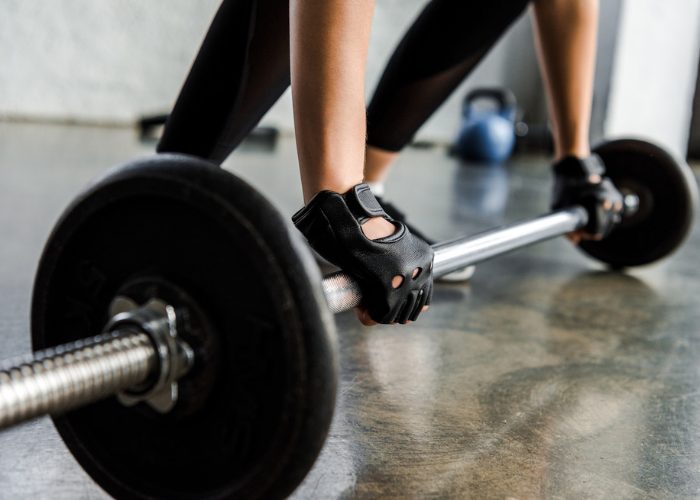
Exercise always carries some risk of injury or worsening pre-existing conditions. When performed properly, strengthening exercises can improve the quality of muscles and connective tissues in the back to balance the joints, stabilize the spine, and absorb the load of the body[8].
However, improper performance of even the lightest exercises can be an unassuming back pain cause. Problems tend to occur when movements are performed poorly, often because of excess loading or poor movement control and can introduce you to a cycle of injury and weakness that persists for years. Be sure to focus on proper technique and sustainable, slow loading because of stay healthy and get the most from your training.
Cause #6: Carrying Too Much

If you’re trying to prepare for the day, you might bring a huge collection of objects to work with you. For example, if you work and exercise on the same day, you might bring all your work things, gym gear, and food for the day. This is a lot of strain to put through your back, and it can cause excessive compression, or even increased curvature, through the lower spine. These are serious postural changes and you should be sure to carry as little as you reasonably need for the day, especially if you have a satchel or rucksack.

Conclusion
You don’t need to change your whole life, but be mindful of your habits and how they can affect your health. As you’ve learned, many daily activities are common back pain causes, so being mindful how you do them is key. For example, if you need to sit for long periods of time, be sure to practice good posture and take a break. Make a few small adjustments to the way that you act and move and you’ll find yourself living a happier, more mobile, pain-free life.
References
- [1] Kelsey, J and White, A. “Epidemiology and Impact of low-back pain”. Spine. 1980, 5(2):133-142. <http://journals.lww.com/spinejournal/Abstract/1980/03000/Epidemiology_and_Impact_of_Low_Back_Pain.7.aspx>
- [2] Owen, N et al. “Too much sitting: The population-health science of sedentary behaviour”. Exercise Sport Science Review. 2010, 38(3): 105-113. < https://www.ncbi.nlm.nih.gov/pmc/articles/PMC3404815/>
- [3] “Low-Back pain”. Physio-pedia.com. <https://www.physio-pedia.com/Low_Back_Pain>
- [4] “Correct sitting posture: Driving”. Physiomed.co.uk. <http://www.physiomed.co.uk/uploads/guide/file/21/Physiomed_Sitting_Guide_-_Driving_Digital.pdf>
- [5] Webb, R et al. “
prevalence and predictors of intense, chronic, and disabling neck and back pain in the UK general population”. Spine. 2003, 28(11): 1195-1202. <http://www.physiomed.co.uk/uploads/guide/file/21/Physiomed_Sitting_Guide_-_Driving_Digital.pdf> - [6] Sherbourne, DK et al. “Stress fractures of the medial malleolus”. The American Journal of Sports Medicine. 1988, 16(1): 60-63. <http://journals.sagepub.com/doi/abs/10.1177/036354658801600111>
- [7] “MSD – Manual handling”. UK Health and Safety Executive. <http://www.hse.gov.uk/msd/manualhandling.htm>

